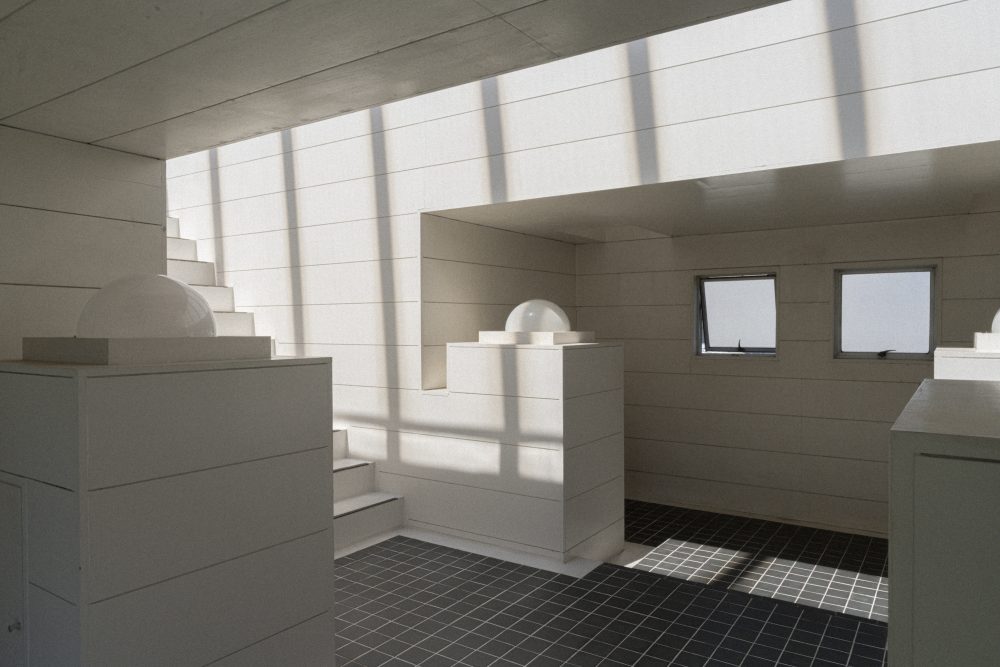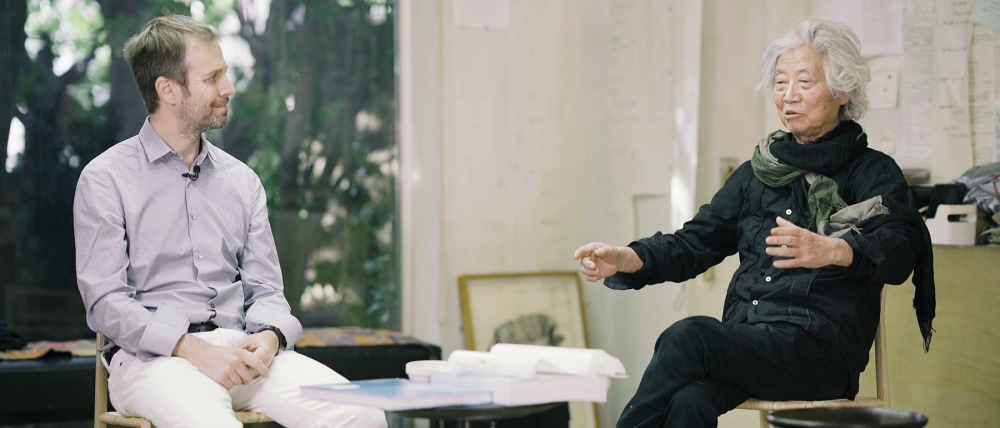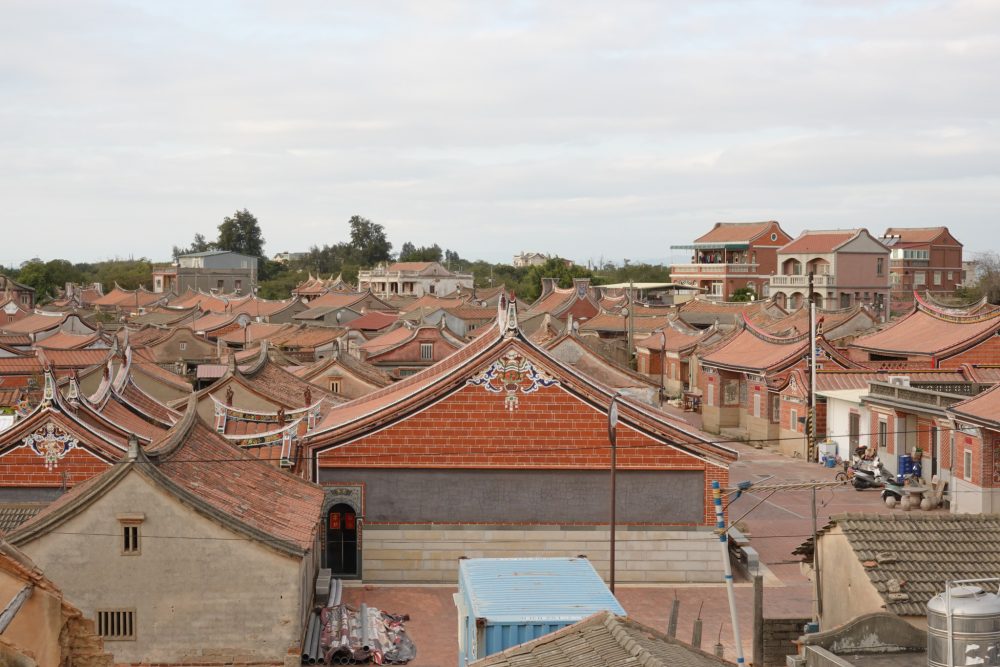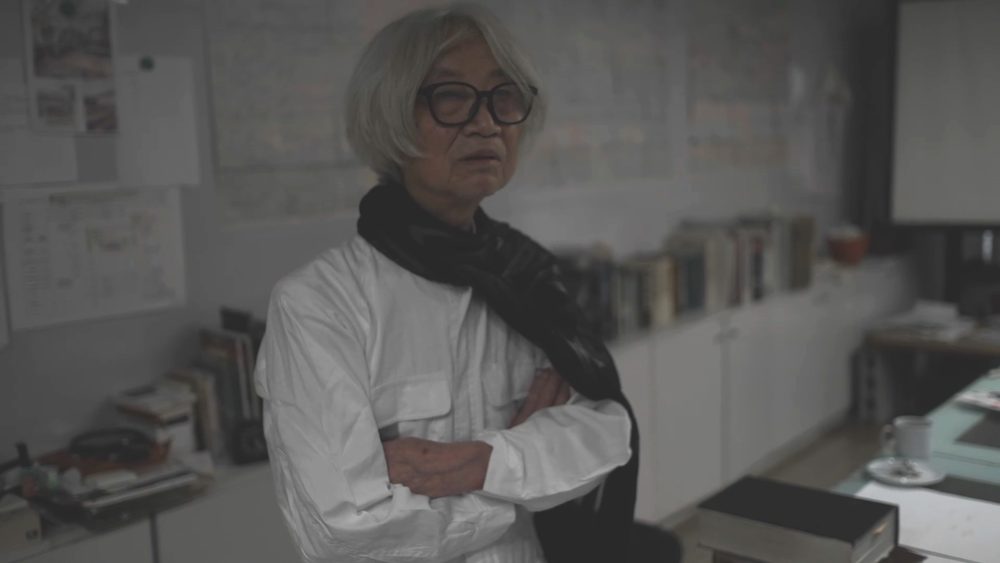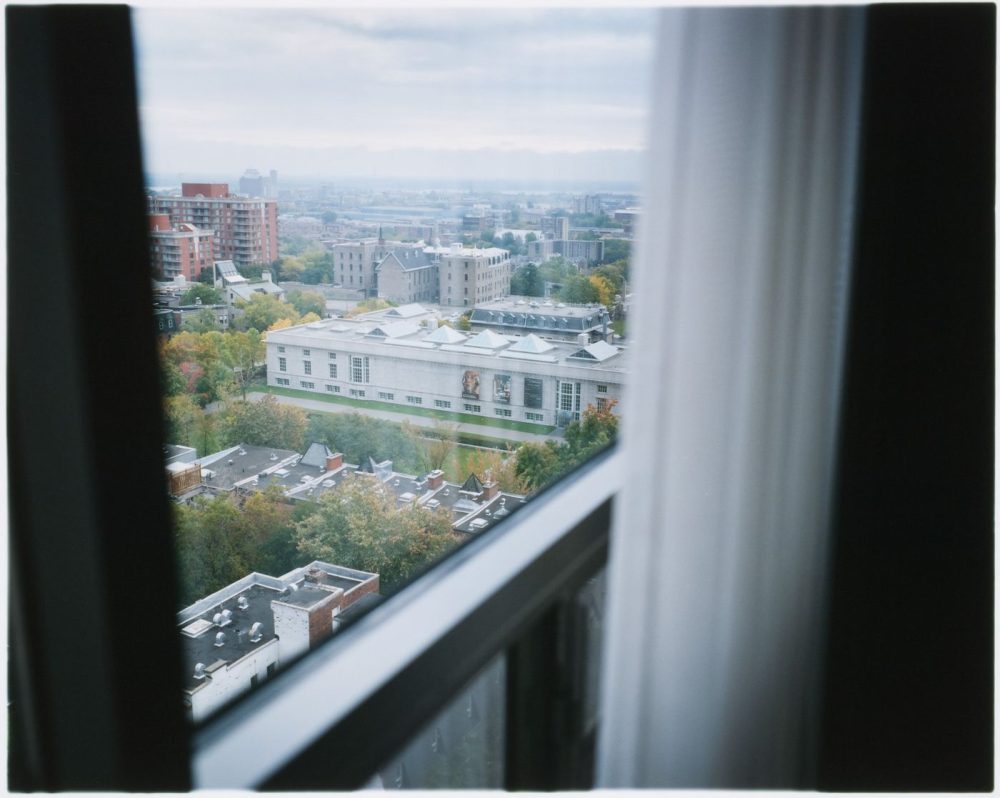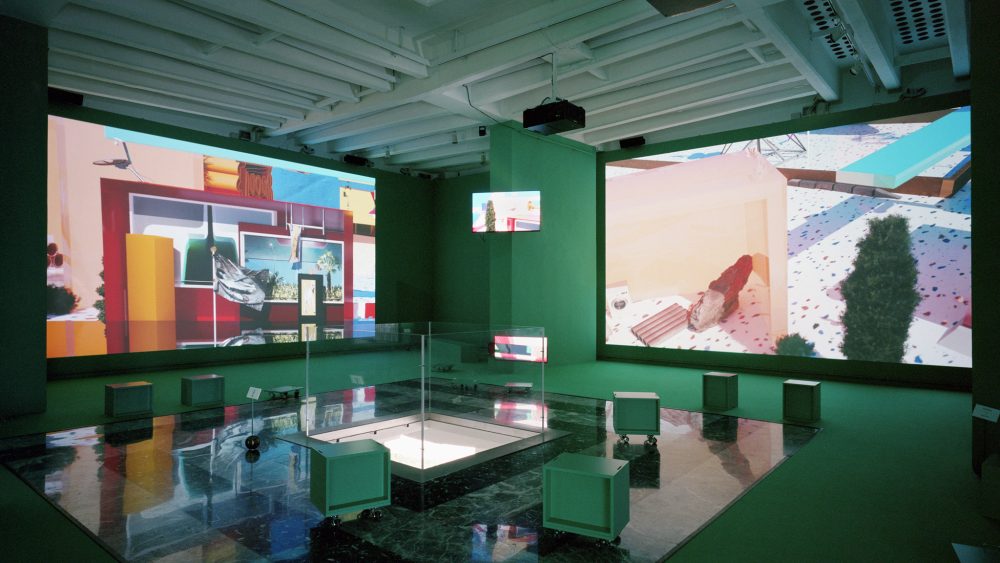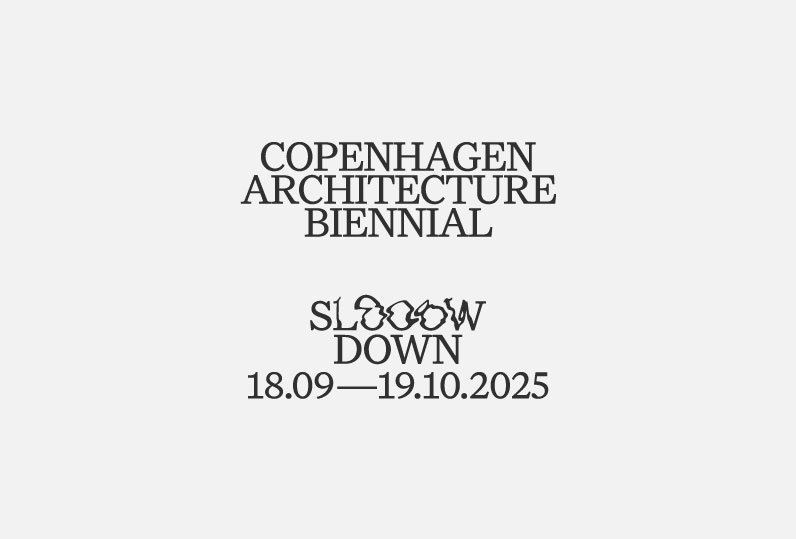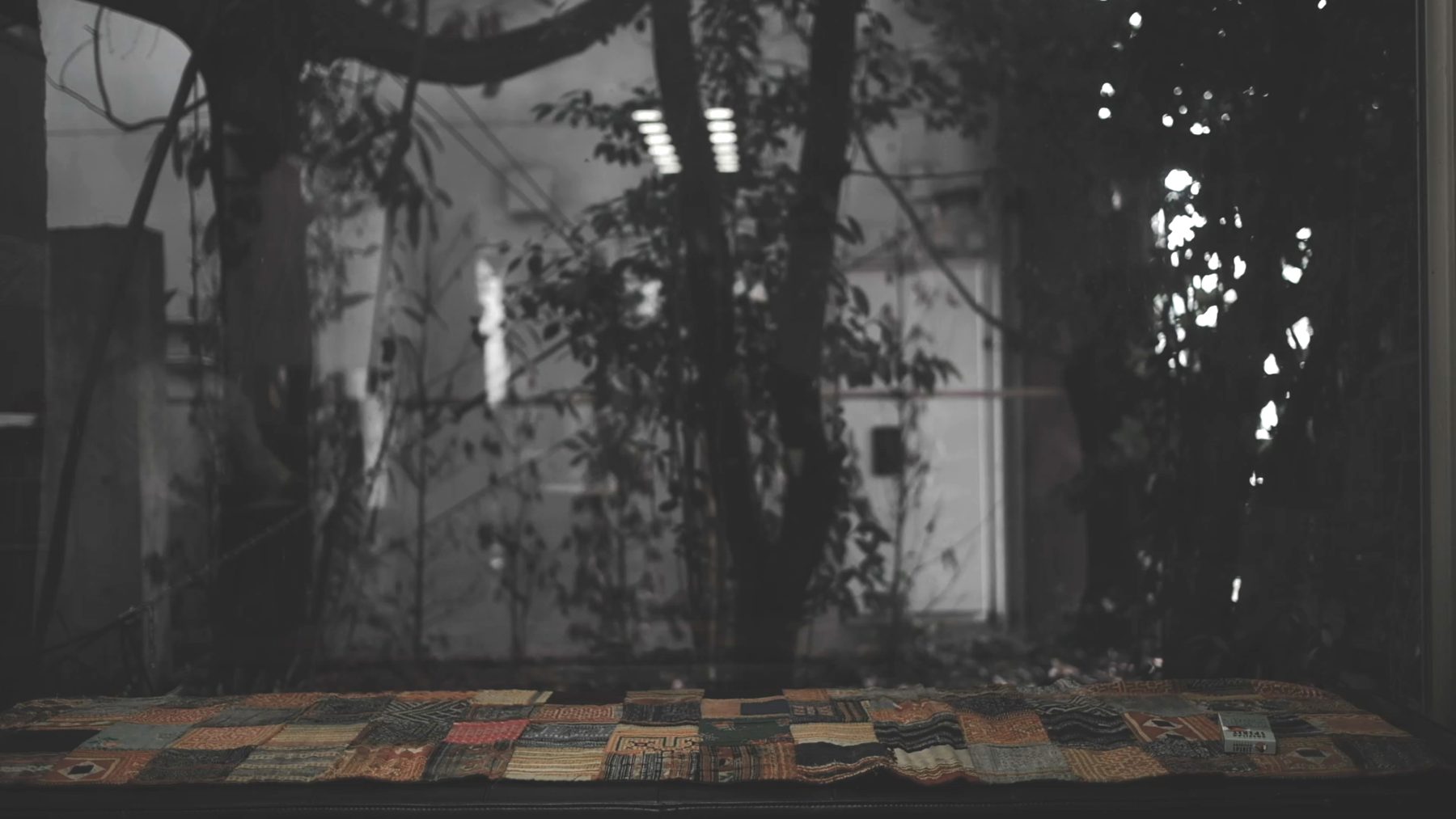
Series Opening a Window to the World
Hiroshi Hara and Fictionality (Part 1)
10 Nov 2025
- Keywords
- Architecture
- Interviews
This text is a transcription of an interview with Hiroshi Hara, conducted at Atelier Φ Architectural Research Institute on June 28, 2021. Spanning three hours, the interview traces his narrative from childhood memories to reflections on mortality.
War and Famine
In 1945, I was in the third grade of elementary school, and that spring the air raids came. At the time, I was living in Kawasaki and was still in my second year. The school was almost empty. When I was in first grade, all my classmates and teachers were still there, but a year later, the older students had all been evacuated. Since there were no students from third grade and above, by the time I became a second grader, I was the oldest in the school. That moment felt like a turning point in time. For me, the harshest, the most devastating changes were the air raids and the end of the war.
I lived near a station of Keihin Kyuko Line in Kawasaki. Next to the entrance of our house, there was a dug-out space beneath the shoe cabinet. Every night, we crawled into that space. That air raid shelter always made me feel threatened—it was dangerous. When it rained, it became an intense experience. But in the end—I feel deeply grateful to my parents—about three days before the big air raid, they decided it was too dangerous to wait any longer and sent the three of us children off to Nagano Prefecture. Taking the Chuo Line from Shinjuku, we rode on a train where none of the windows had glass. Children were lifted into the train through the windows, and we were told to go to the countryside. Both my mother and father were originally from Nagano, so they managed to send us out of Tokyo. Because of that, I was not directly caught in the air raid. I remember constantly seeing fires blazing in different areas, but if I had stayed, I would not have survived.
Then the war ended, and that’s when other great hardships began. The biggest one was famine; there was simply nothing to eat. The food shortage had already begun when I was still in Kawasaki, and the struggle lasted throughout my elementary school years. From third grade to sixth grade, for about three and a half years, we had hardly anything to eat. The people who fled took everything, leaving nothing for us children. Frogs were the best food source. We caught dragonflies and used them as bait to catch frogs in the rice fields. It worked very well. That was quite a significant food source. Even now, here [in Hachiyama-cho, Shibuya, where Atelier Φ is located], I sometimes see frogs, and I feel a sense of connection with them, as if they were my old friends.
That experience has influenced many aspects of my life. For example, even now, I stay awake until morning. I feel uneasy at night. There is something unsettling about the night, so I prefer to stay awake. Once morning comes, I can sleep in peace. This may also have something to do with my work in architecture. The impact of famine and air raids during childhood is incredibly strong. I spent those years in Iida, Nagano Prefecture, where nature was beautiful. Growing up in the valley of the Tenryu River gave me a fundamental appreciation for valleys. In a way, the concept of a valley has become something profoundly important to me.
-
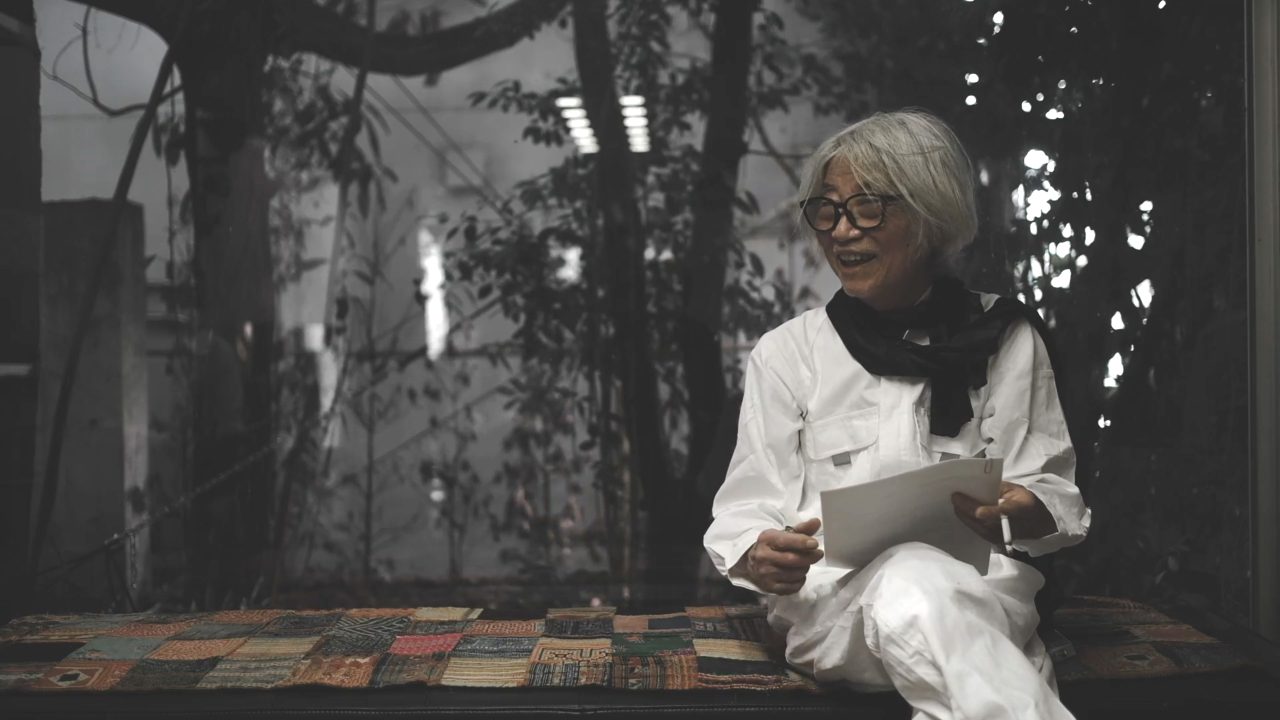
“I feel a sense of connection with them, as if they were my old friends.”
Returning to Tokyo
When I entered the University of Tokyo, I instinctively felt that I had come back to the city from the countryside. I often talk about this, but there was a department store called Komiya in Kawasaki. I believe it still existed until recently [Editor’s note: It closed in 1996]. That department store was the only five-story building with an elevator. There was just one elevator, and we used to play hide-and-seek and tag there. In a sense, that building became a substitute for nature. When I came back to Tokyo, I felt like I had returned to something familiar, something nostalgic. I had come home.
At the same time, we were desperately poor. My father was a tailor, but he had lost his job. The rest of my family were women, so the question was how to survive. I was always doing part-time jobs. My only advantage was that I was good at studying, so I took on tutoring jobs, teaching younger students to make a living. The poverty was inescapable. Even as a university student, I was constantly working as a private tutor.
Why did I choose to study architecture? After a year and a half in the general education department at the University of Tokyo, I had to decide on a direction. Originally, when I was a child, I thought I would become a mathematician, but I also loved the arts. I wasn’t particularly talking about architecture, but I often discussed literature and music. Eventually, the friends at the Komaba Dormitory told me, “If you talk about art that much, you should study architecture”. That made me wonder—maybe architecture was something good after all. But having grown up in the countryside, I didn’t know much about architecture. It wasn’t until I learned about Tange-san [Kenzo Tange] that I finally got it. I thought, “He’s amazing, he really knows how to do things.” And that’s how I ended up choosing architecture.
Professor Tange
However, when I tried to write my graduation thesis in Tange Lab, he asked me to help him with his thesis on urban design. I didn’t think I was part of the Tange lineage, but actually, when I was a student, I went to Tange-san’s house every day. But I wanted to focus on architecture, not urban planning, so I ended up going to Professor Utida Lab [Yositika Utida]. This became a major turning point for me.
I used to visit the Tange house in Seijo, and I thought no architecture could be more beautiful than that. It was really beautiful. Beautiful. Incredible, really beautiful. What’s interesting, I built the Iida Art Museum, and while working on that museum, I went with my senior, the mayor of Iida city, to ask for the study room that belonged to Kunio Yanagida, which was in Setagaya. We asked if we could have it. In the end, it was decided that it would be fine, but what surprised me was that the house in front was Tange-san’s. And then I thought, “Ah, that’s interesting, it’s quite close”. The Tange house was truly a beautiful house.
When I was younger, I wrote critiques of Tange’s work, but he was a very kind teacher. Every time someone built something, he would comment on it—”That was good”—and talk about the building. He always engaged with us. Without understanding this, you really wouldn’t understand the relationship I had with Tange-san.
Of course, my true teacher was Professor Utida. He was my real teacher, but when it comes to architecture, Tange-san had a deep influence on me. He had an incredible way of smoking. He used to carry a tin of Peace cigarettes and would smoke one or two cans a day. He didn’t care much, he would just light them up, and sometimes several would be burning halfway. But Tange-san was a kind person. He would never say, “Do this, hurry up.” Instead, he would say, “Would you mind doing this for me?” or “Could you please do this?” He spoke to us in that respectful way. It was an enjoyable time, and Tange-san was a great teacher. In that sense, he was a teacher in a broad sense of architecture. As an architect, Tange-san’s influence was incredibly strong. Even considering what I later heard from Isozaki-san [Arata Isozaki] and other seniors, I feel it’s worth saying these things.
-
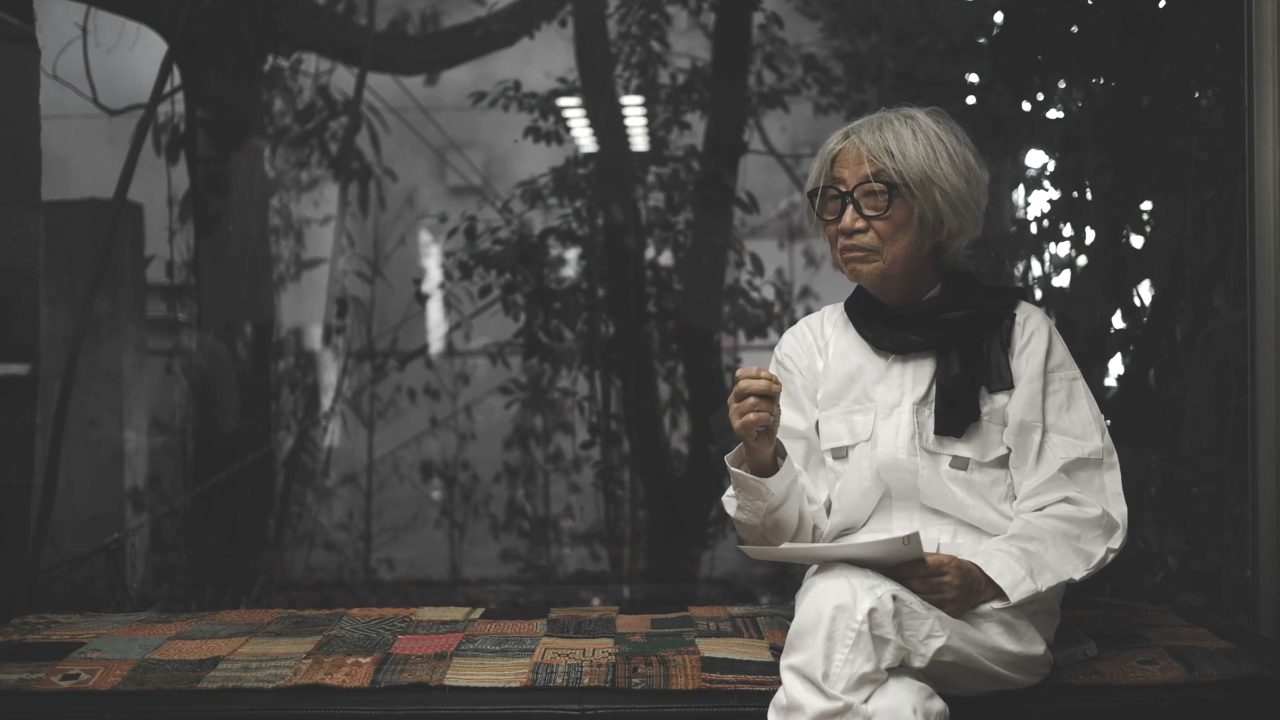
“I went to Tange-san’s house every day.”
Utida Laboratory
I graduated from the undergraduate program in 1959, the year of the Anpo Struggle. It was the year of the Japan-U.S. Security Treaty, and during that time, I had no time at all because I was busy with part-time jobs and protests. It wasn’t that I wasn’t interested in architecture, but honestly, I didn’t really understand what was going on. Before I knew it, I had become a Master’s student. I was very poor, but I never had to pay tuition because I received full exemption.
When I entered the master’s program, I thought I should focus on architecture under Professor Utida. A lot of information about modernization was coming from the U.S. and Europe. He was the teacher who promoted modernization, so all material was coming in. My task was to translate it. He told me I didn’t need to do part-time jobs anymore because I could work on translations. So, I translated texts on architecture—from English, German, French, Italian. I wasn’t even sure if the translations were correct, but I studied hard for the sake of future modernization.
Through translation, modernization steadily advanced. For example, aluminum became a symbol of modernization. Before, steel sashes were used, and Tange-san made his own steel sashes, but they rusted and stopped working quickly. Then there was glass, which had been around for a long time, but in modern architecture, windows became larger. The sash and glass were the biggest changes because windows could open. Lightweight steel and ALC, which were cheap and widely used, were also important.
Professor Utida was the head of about 30 to 40 committees, and he probably made decisions on dimensions. For example, he used the Fibonacci sequence for design, but there was a strong aspect of deciding dimensions. Over time, waterproofing materials and paints came out, and finally, urethane appeared, but before that, other materials, such as asbestos slate used by Ikebe-san [Kiyosi Ikebe], were used. When I was in Utida Lab, I was learning the basic knowledge of modernization. Later, I began to think that the shape of modernization might be different, that it might have changed. The modernization that Professor Utida advanced led to the current state of Japan. It continued until the 1990s, and the modernization at that time was very orthodox in its meaning.
Later, I thought that this was a bit off regarding the idea of moving straight ahead with modernization. Professor Utida and I were born in the same year of the rat, twelve years apart. And when there’s a ten-year difference, the gap is significant. The generation of Professor Utida thought that they had no choice but to push modernization forward. But those of us in the next generation began to think, “Wait a second, maybe this isn’t the way to go.”
The Anpo struggle
Then there was the 1970 Anpo struggle. Around that time, the incredible cultural revolution in the world was spreading here too. I was first appointed as an associate professor at Toyo University, where I stayed for five years. After that, I returned to the University of Tokyo, and it was in 1969, during a time of great upheaval. The Yasuda Auditorium at the University of Tokyo was completely occupied by students, barricading it, creating a tremendously chaotic scene. And in the middle of that, I was writing What is Possible in Architecture.
I was called into the barricades by the students. It was then that I firmly decided never to trust politicians. The most important thing I learned from that experience was this: war inevitably leads to hunger. So, what’s the real issue? It’s about how to live. In other words, the question that these young people posed to us was, “Are you human?” Of course, the answer is “Yes.” Then they asked, “Are you an architect?” Again, the answer is “Yes.” And then they asked, “Which is more important? It must be that humans are more important, right?” The politicians, those who thought they were progressive and active, all said that.
I said, “That is absolutely wrong. Humans must do something. They must create. Therefore, the architect comes first. Creating architecture exists before being human.” That’s my way of thinking. It’s a bit different from professional ethics. It’s not just that, but it’s something you would need a longer conversation to understand. Camus and Sartre had many debates on this issue. Both were atheists, denying the existence of God. There was also such an atmosphere at the time, but now I think it was because I believed in science.
-
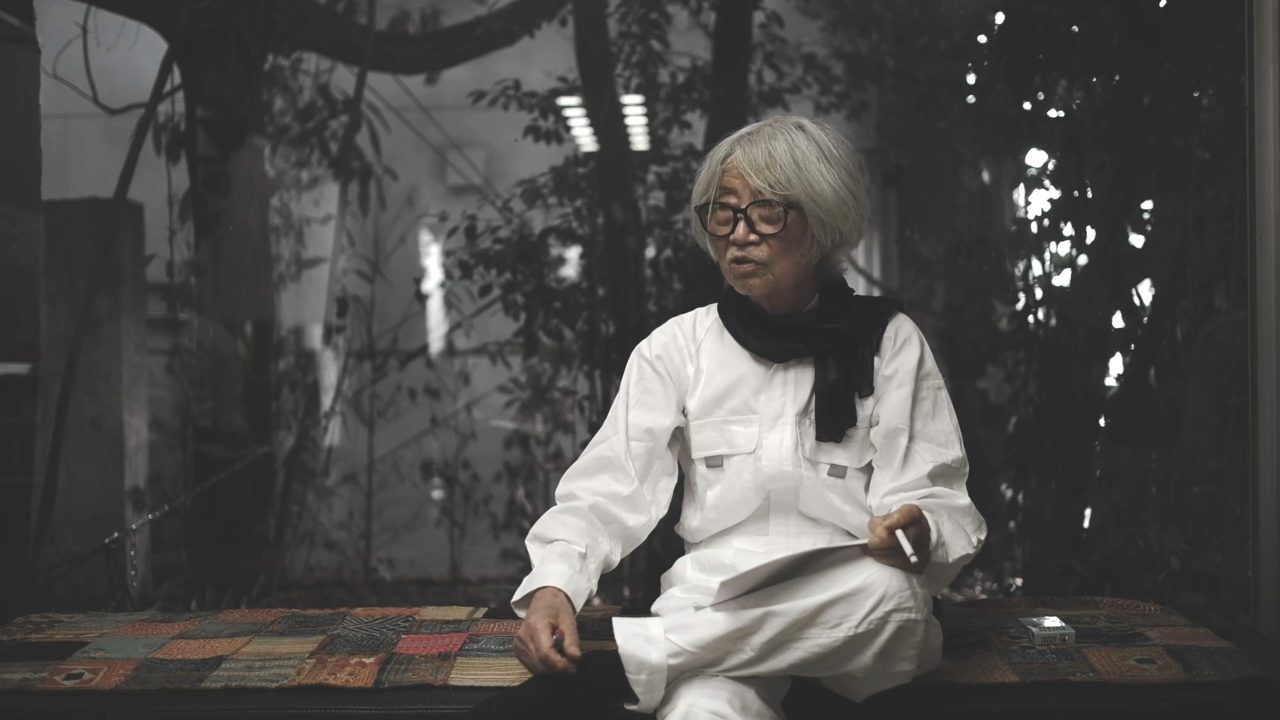
“I now think it was because I believed in science.”
Architect
However, there are various religions, aren’t there? Simply put, I think they are all a form of fictionality. The question is: which one writes the best, most beautiful story for me? For example, Buddhism is very beautiful. It’s beautiful, isn’t it? Christianity is the same. I absolutely don’t support them, yet when I read Rumi Quotes, I found Rumi is a Sufi, and Sufism is a form of theosophy, Gnosticism. Essentially, it’s about how one can know God. That’s Islam today, right? And in that Islam, some incredible poets appeared, and Rumi is considered number one—or at least, there are proper materials available.
If you read Aristotle, you will quickly understand that he sees architects as individuals doing profoundly good things. Rumi is the same as Aristotle in that regard. Aristotle was from around 350 BC, and Rumi lived in the 13th century. Somewhat later than figures like Dōgen or Fujiwara no Teika in Japan. Rumi, too, uses the architect as an example of something good. He suggests that by slightly changing what an architect does, it could become cosmic.
What I felt while conducting village surveys is that Iran has the greatest architectural intelligence. Iran has both mountains and deserts. Rain only falls on the mountains. So, water that falls on the mountains is collected, and tunnels are dug underground to bring water to cultivable land, artificially creating oases where settlements are established. It’s truly beautiful, almost unbelievable. I’ve never been to Isfahan, but even when looking at photos of places Louis Kahn went to, the architecture is remarkable. That kind of power is somewhat different from villages, but the intellectual strength behind creating artificial oases is truly impressive.
Therefore, when Rumi from Iran mentions architecture in his various writings, I feel pleased, thinking that he must understand it. On the other hand, in Japan, you will never find Dōgen saying anything about architecture. I’ve searched through a huge amount of material, but there isn’t even a single line. There’s probably nothing in waka (Japanese poetry) either. In Japan, people who compose poetry—those who write in the 5-7-5-7-7 rhythm to create a single poem—are the ones who sustain the culture. I still think that’s true today. The central figure of that poetic tradition was a man named Fujiwara no Teika… I’ll write it down for you on paper.
Teika
Fujiwara was a noble family in the Heian period. They were the ones who held power and created the culture of Kyoto. Among them was a poet. There was also another person, Kamo no Chōmei, and a person named Dōgen, who went to China to study Buddhism and then returned. These people lived during the turbulent time when Kyoto, the capital of the Heian period, was being replaced by Kamakura. It’s incredible, isn’t it? “Make things smaller.” The large dwelling that existed originally was reduced to one-tenth of its size. Then, it was further reduced to one hundredth. There is a bit of ambiguity in this, but the person who said this is Kamo no Chōmei, and it’s written in his Hōjōki, an essay. He tells us to make things smaller and smaller. By making things smaller, the world begins to come into view. When things are smaller, you can see the birds and flowers around you. While living in a large house, he experienced a fire and decided to rebuild it to this smaller scale. Therefore, his essay is incredibly important to me. He built a house himself and lived in it. In a way, he’s an architect. So, I believe there is no architectural theory more perfect than his. I think it is so perfect that nothing like it exists anywhere else in the world.
In contrast to Rumi, who says that architects are doing something profoundly good, the Hōjōki, for example, is said to be the prototype of the chashitsu (Japanese tearoom). However, it took about 300 years before chashitsu appeared. Around the 1500s, great figures such as Jōō and Sen no Rikyū emerged. There was a gap of about three centuries. During that time, the idea wasn’t to build that kind of architecture directly, but rather to turn such poetry into architecture—and that became the chashitsu. The person who wrote that poetry was Teika. He was an incredible genius.
For example, there’s something called collage, or bricolage, right? Collage is about collecting things, while its opposite is the engineer. The way of building a chashitsu comes from Teika. What Claude Lévi-Strauss referred to was the collage approach, but in fact such a way of thinking had already existed in Asia long ago. Engineers are those who invent things, while bricoleurs are those who collect things. Humans can be seen as having these two types, and a chashitsu, for instance, is made by collecting discarded things and assembling them, so it takes time.
For example, in China, there are Five-Character Quatrains and Seven-Character Quatrains, and there are incredible poems that, in a sense, decide history. One of the poems that determined Japan’s fate is this one by Teika.
見渡せば花も紅葉もなかりけり 浦の苫屋の秋の夕暮れ
Miwataseba Hana mo momiji mo Nakarikeri Ura no tomaya no Aki no yūgure
If you were to ask what the most important poem in Japanese history is, the answer would probably vary depending on who you ask. However, from my perspective as an architect, it would absolutely be this one. The reason is that for 300 years, people pondered how to translate such a poem into architecture, and eventually, they created the chashitsu. This is how it can be interpreted: when you look around, you see neither flowers nor autumn leaves; there is nothing beautiful. Instead, there is only a very poor house. It is an autumn evening, and the scenery feels desolate. Yet, when Japanese people read this, even though it says there are no flowers or autumn leaves, it seems like they are there. It’s the reverse. What is unbelievable is that, despite reading the opposite, everyone imagines a scene filled with flowers and autumn leaves, a paradise in full bloom. But in fact, what is described is an extremely lonely world. At the same time, these layers overlap, and it’s impossible to tell which one it is. This is Buddhism: It may be neither. To realize this is to seek the world of “Not-Not (非ず非ず).”
-

"From my perspective as an architect, it would absolutely be this one."
The world of Not-Not
To connect this to something very important, this is a double negation, isn’t it? It’s like saying, “This is not an apple,” and then, trying to negate what is not an apple. In that case, it may become an apple — that’s Aristotle. However, as you continue, things become vague and ambiguous. There are various explanations, but in Hegel’s dialectic, there is A and not-A, and when you perform not-not A, something new appears. The Marxists made a very big error with this.
The world of “Not-Not” I’m talking about is one where both the image of flowers blooming profusely and absolute nothingness coexist simultaneously. That is the kind of aesthetics I mean. In terms of double negation, dialectics and “Not-Not” may seem to share the same meaning, but they are entirely different. There are two sources in the world: one being dialectics, and the other being “Not-Not.” This is not only in Japan but found across the whole of the East. From these two arise the foundations of diversity, overlay, juxtaposition, and relativism.
Fictionality
However, the key term here is fictionality. Our lives are also fictional. So, what should we do when life itself is fictional? Well, as an architect, why not create fictional architecture? That’s my simple perspective. How can we create a fictional world?—that’s what it comes down to. Perhaps, our generation is thinking in that way, although I haven’t really discussed it with many people.
For instance, if I were to talk to Kenzaburo Oe, we probably wouldn’t have serious discussions on this subject, and it would likely end with the conclusion that we don’t really know. So, I feel that the world is in a very difficult situation right now. But from the perspective of fictionality, this isn’t the end. Fiction keeps emerging, again and again.
For example, I gave one good example earlier—the story about the poem. Around 800 years ago, Teika selected the Hyakunin Isshu, a collection of 100 poems. And even now, everyone still enjoys it. Every New Year, there’s a poetry contest, a nationwide event. I think that’s amazing. People back then, and even those from earlier times, seriously thought about how to preserve these poems for another thousand years. They put a tremendous amount of effort into it. I think they were truly remarkable people. And there are so many famous poems, and many more that we can find. In China, for instance, there is an overwhelming abundance of poetry and cultural heritage. Iran, too, has an incredible trove of culture, like a mountain of treasures.
But somehow, Japan studied Europe exceptionally well. It’s the same as what I mentioned earlier. When it came to modernization, they studied English and French, translated everything, and tried to absorb everything that was coming from the world. Japan, being the island at the far edge of the world, tried to engage with everything that reached it. It was a tremendous effort. So, in fact, modern architecture fundamentally began by rejecting villages. What does that mean? Well, vernacular architecture is tied to regions, to ethnicity, to nationality, and so on. So, these things were regarded as undesirable. When they said, “architecture for all people,” I think that was absolutely right. I think it was correct. And they were trying to oppose things like Nazism, weren’t they?
So, there’s no real issue with that, but I still think there’s something a little suspicious about it. I still feel that way. People will probably come to realize the terrifying nature of capitalism. Right now, it seems as though freedom can only exist within capitalism. But modernity had this duality: the space of capitalism, and the space where true freedom existed. So, I think humans now need to seriously reflect on what constitutes good fictionality. Those who have religion and believe in God are fine—it’s hard to find a better story than that. Take Christianity, for example: it has taken 2,000 years to create such a beautiful story. So, I think religion, in that sense, is the epitome of fictionality.
-
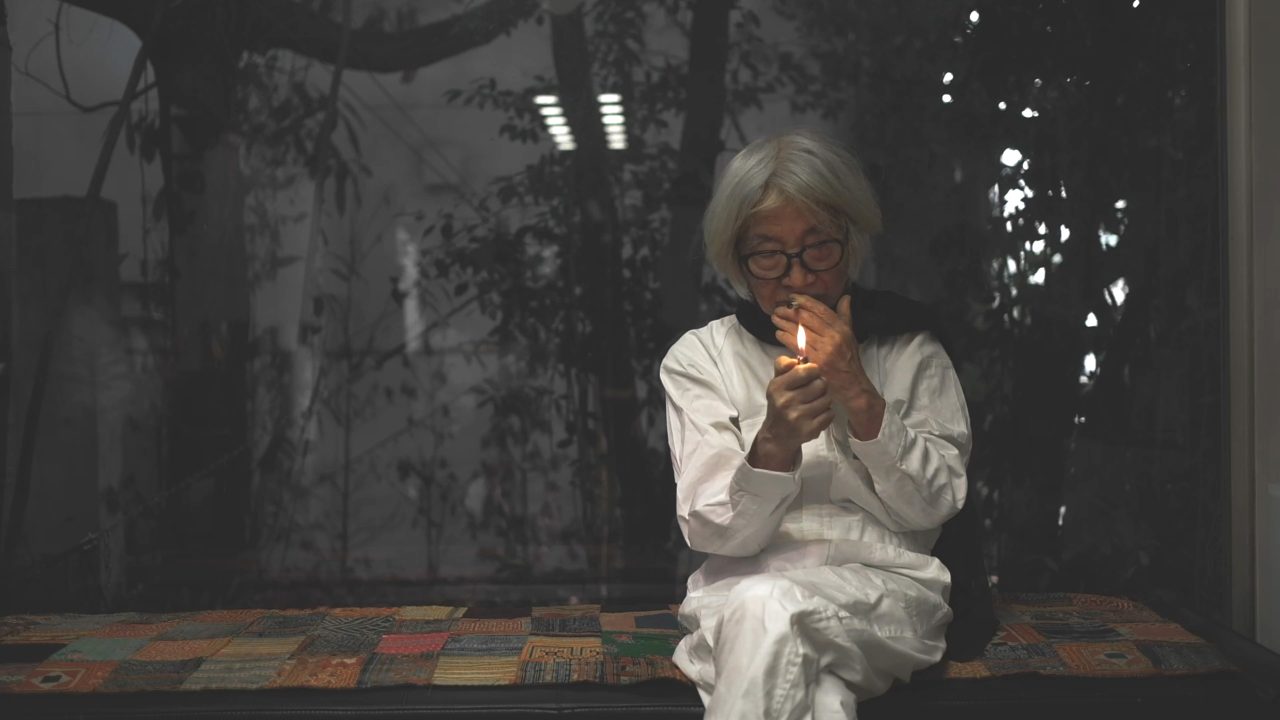
“What is good fictionality?”
(Continued in part 2)
Hiroki Kominami
Urban historian. After completing a Ph.D. of Engineering at the Department of Architecture, Graduate School of Engineering, the University of Tokyo, served as an Assistant Professor at the Institute of Industrial Science, the University of Tokyo since 2020. The doctoral dissertation is Urban Architectural History of Shrines in Edo-Tokyo. The current research focuses on the socio-spatial history of low-density residential areas and on modern and contemporary Brazilian architecture. Co-translator of EXPERIENCE: How Life Sciences Transform Architectural Design (Kajima Institute Publishing, 2024).
Veronika Ikonnikova
Architect from Ukraine. Educated in both Ukraine and Japan. Master of Engineering degree from the Department of Architecture, Graduate School of Engineering, the University of Tokyo in 2018. Worked at Kengo Kuma & Associates since 2019.
Tyler McBeth
Architect from Colorado. After graduating from Texas Tech University in 2015, earned a Master of Engineering degree from the Department of Architecture, Graduate School of Engineering, the University of Tokyo in 2018. Worked at Nikken Sekkei since 2019.
Soichiro Harada
Architect, licensed as a First-Class Architect in Japan. Worked at Kengo Kuma & Associates from 2015, and after completing a Master of Engineering degree at Columbia University GSAPP in 2024, joined BIG’s New York office. Co-translator of The Placemaking Handbook: How to Transform Public Spaces into Attractive Places (Gakugei Publishing, 2025).
Hiroshi Hara
Born 1936 in Kanagawa, Japan. Graduated from the Department of Architecture at the University of Tokyo in 1959. Completed the doctoral program at the university in 1964. Doctor of Engineering. Associate professor of architecture at Toyo University from 1964. Associate professor at the Institute of Industrial Science at the University of Tokyo from 1969. Professor from 1982. Named a professor emeritus upon retiring in 1997. Conducted design work in partnership with Atelier Φ from 1970 to 1998. Renamed the firm Hiroshi Hara + Atelier Φ in 1999. Named a profesor ad honorem at the University of the Republic in Uruguay in 2001. Passed away in 2025.
